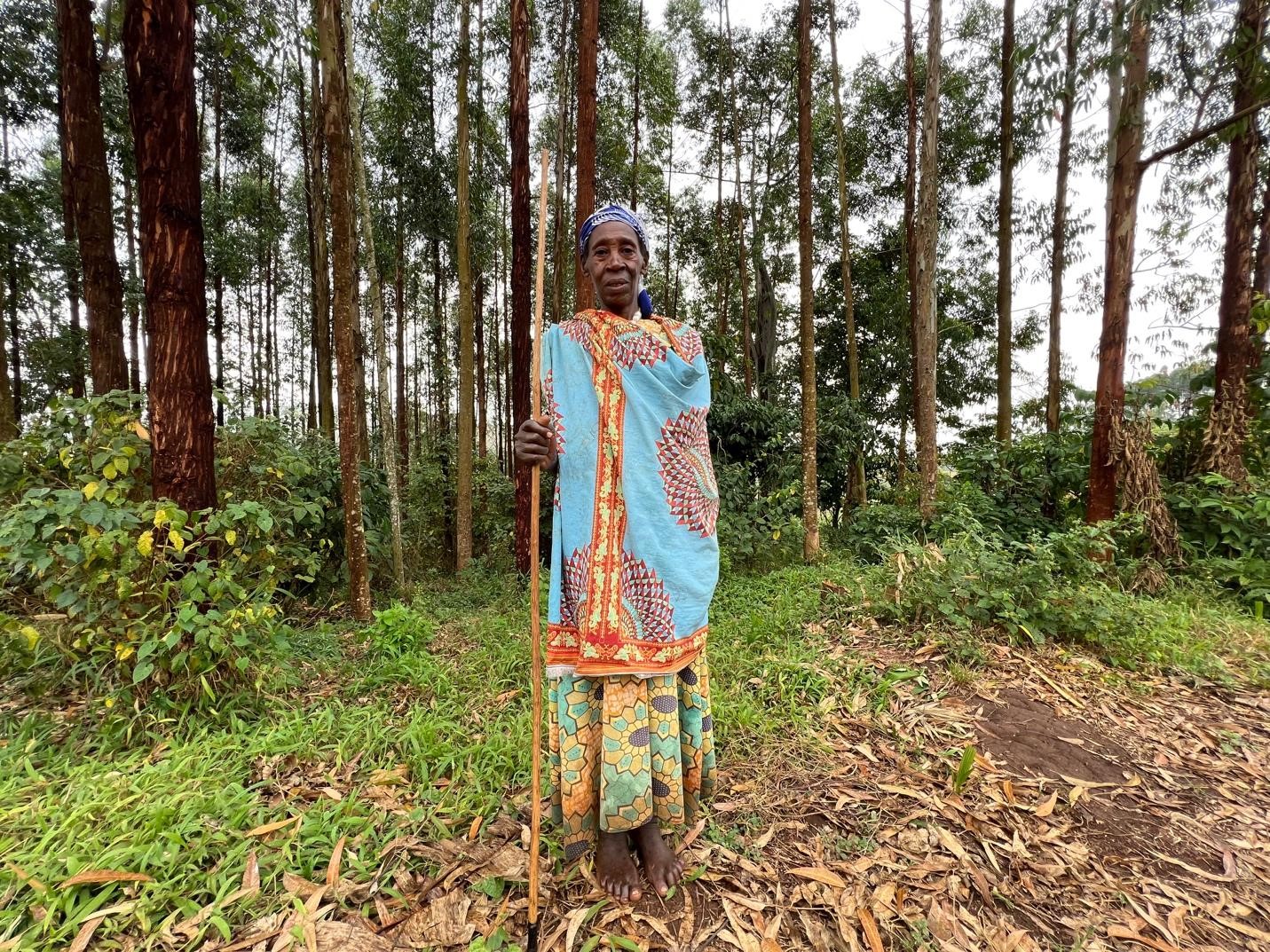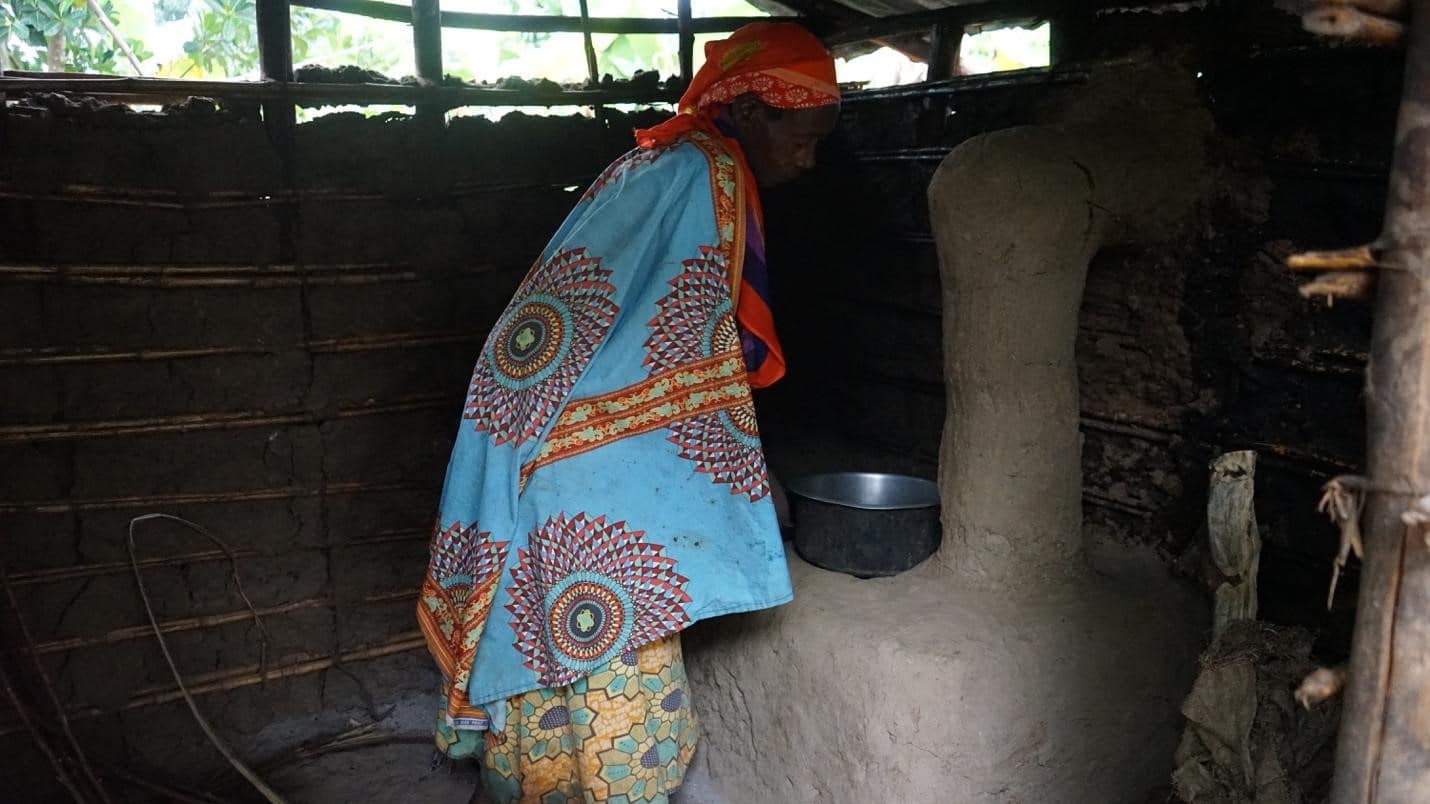Clean Cooking and Tree Planting: How Rubango Village is Combating Climate Change
“I have lived here for over 50 years,” Generoza says. “When I first moved to Rubango, the rainfall was consistent, the land was fertile, and we really loved it here. Today, it is a different story.”
Generoza and her family live in Rubango Village, Kyenjojo District, where the community often struggles with insufficient access to land, limited resources, and multifaceted instabilities that keep households in the cycle of ultra-poverty. As a subsistence farmer, Generoza is particularly affected by inconsistent rainfall and a landscape that has changed over the years. “All trees were cut for firewood and charcoal,” Generoza describes, “making it rare to find a forest of trees.”

Generoza in her small forest in Rubango Village, Kyenjojo District.
For subsistence farmers like Generoza, such a changing environment compounds existing vulnerabilities—both for communities and for the climate. Inconsistent rain leads to low crop yield, which makes it difficult for families to meet food needs. Incomes are often spent on supplemental nutrition, which makes it hard to invest in climate-friendly technologies for energy and heating. Consequently, those communities rely on firewood and charcoal for cooking and heating, causing further deforestation, which impacts the rain ecosystem. A globally warming climate further aggravates these vulnerabilities, and households like Generoza’s struggle with the resources to cope.
Generoza and her community were determined to change this.
As part of Raising The Village’s “Secure, Improve, Sustain” program, Generoza joined a women’s Village Savings and Loan Association (VSLA) that empowers community members through financial inclusion. As RTV Project Assistant Tumukunde Emmanuel describes, this group often used VSLA meetings to troubleshoot challenges facing households within the community. After regularly discussing the impact of a changing environment, they began brainstorming ways to combat climate change.
“Women kept raising the issue of not finding firewood – fearing they may not be able to cook for their families,” Tumukunde describes, “We discussed possible solutions, and advised the members to start using charcoal-saving stoves. This would reduce the amount of firewood needed to prepare a meal and, at the end of the day, less trees would be cut.”
These efficient cookstoves use 50% less wood and produce less smoke than ordinary stoves, which saves trees, money, and protects the household members, particularly women, from smoke-related illnesses such as pneumonia, strokes and lung diseases.
Inspired, Generoza’s savings group used funds to construct charcoal-saving stoves for each of their households. Now, her community is saving trees, time, and money. “I used to spend a lot of time looking for firewood, and sometimes I would not even find enough for cooking,” she explains. “Now with this stove, I use less firewood to make a meal.”

Generoza preparing a meal on her charcoal stove in her kitchen.
Generoza and her peers did not stop there. Seeing the impact forests can have on encouraging healthy rainfall patterns, they began investing in tree planting as well. “I started planting trees by turning parts of my land into a small forest,” Generoza shares. “When it doesn’t rain at all, it affects our harvest. So, I planted a small forest in my land to ensure my community receives rainfall.” With improved forests, moisture becomes trapped beneath tree’s canopy, improving soil moisture and encouraging a healthy raincycle. This means more rain for crops, which helps the entire community improve food security and a healthy ecosystem.
Through community-led efforts to prevent deforestation, improve the natural landscape, and foster sustainable practices for farming, heating, and cooking, Generoza’s community is now well on its way to breaking the cycle of ultra-poverty while caring for the planet.


